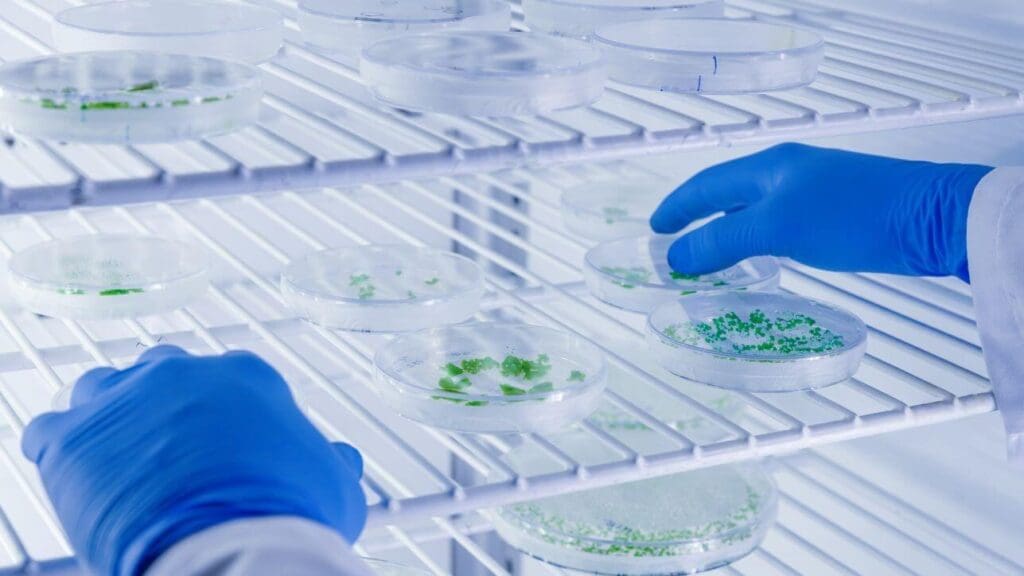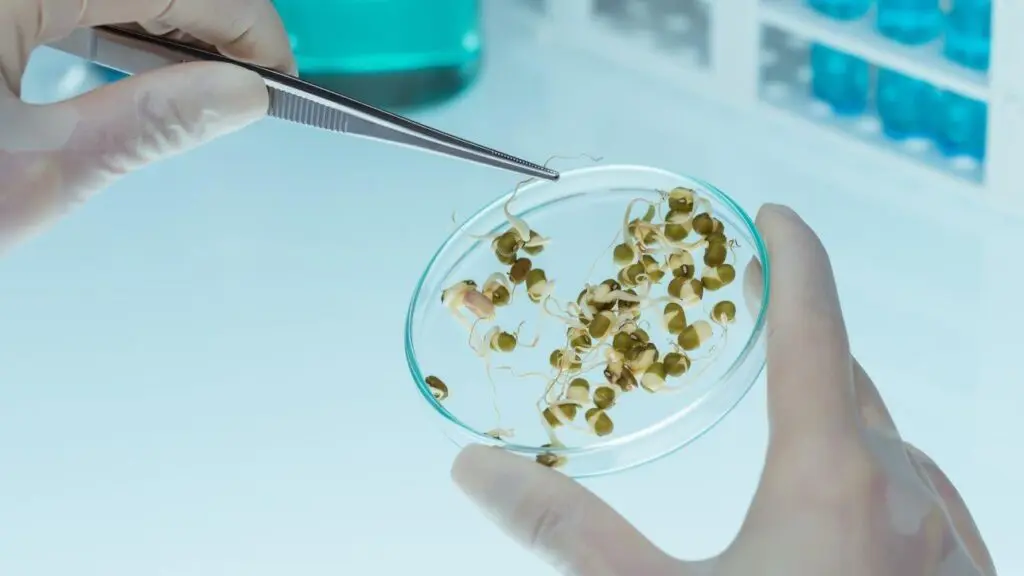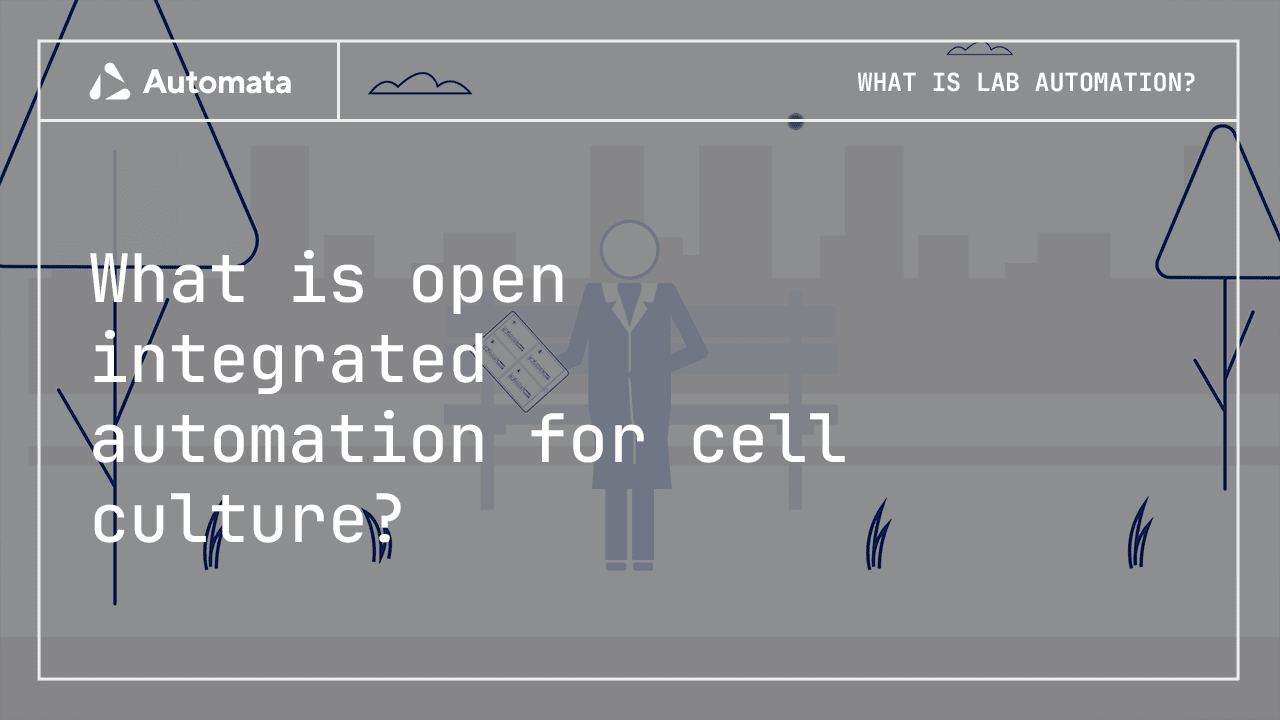Plant tissue culture uses nutrient-containing culture media and controlled aseptic techniques to grow plant cells, tissues, and organs1. Since being established in the early 20th century, plant tissue culture has evolved into an indispensable tool for research into disease-free plants, rapid multiplication of rare plant genotypes, plant genome transformation, and the production of plant-derived metabolites1.
Plant-derived metabolites are used across many industries including pharmaceuticals, cosmetics, dietary supplements, fragrances, flavours, and dyes2. Secondary metabolites (organic compounds produced by any lifeform which are not directly involved in the normal growth, development, or reproduction of the organism15) are particularly important in pharmaceuticals and therapy. Historically, plants have had an important role in traditional medicine, and approximately 80% of the world’s population still uses plant-derived components for health and well-being2.
Plant tissue culture can also be applied to meet large-scale propagation requirements3. With over eight billion people and counting, providing plant-based food products to the world population has emerged as one of the biggest challenges the human race has ever faced3. This article will explore the advantages of plant tissue culture, common problems that arise in plant tissue culture, and how lab automation can be implemented to solve these problems.
Advantages of plant tissue culture
It has long been recognised that plant tissue culture can lead to a dramatic improvement in crops in commercial and agricultural settings4. Recent years have also seen the development of agricultural genomics (agrigenomics), an innovative area of plant tissue culture that utilises genomics to scale-up agricultural solutions.
In plant tissue culture, temperature, photoperiod, humidity, light, and growing mediums can all be controlled to create an optimised environment, ideal for overcoming the many problems involved in standard crop growing5. Several in vitro methods have been developed, including micropropagation, organogenesis, and somatic embryogenesis5, meaning that modern plant tissue culture has many advantages:
- Production of disease-free plants: plant diseases have a global economic impact. Producing disease-free plants is crucial for plant survival and productivity in agriculture6
- Creating genetically diverse plants: crop species have lower genetic diversity than wild plants. Methods such as somatic hybridisation can increase diversity and create important breeding resources7
- Culturing difficult plants: the carefully controlled conditions of plant tissue culture make it easier to grow plants that are usually difficult to propagate8
- Genetic enhancement: plant tissue culture allows easy genetic modification to enhance specific traits. Particularly useful for enhancing flower characteristics in floriculture9
- Year-round produce: reduced propagation times and the ability to grow plants regardless of the season means that plant tissue culture can produce crops all year round10
- Genetic preservation: tissue culture and regeneration from plant explants (living tissue removed from an organism and placed in a medium for tissue culture) can be used to preserve species in danger of extinction, particularly if their natural habitat has been reduced11
- Increasing yields: tissue culture conditions optimise plant growth, increasing yields from individual plants, and can also be rapidly scaled up, further increasing yields from crops10
Common problems in plant tissue culture
Even though the use of cell culture is increasing, the majority of cell biology operations are carried out manually, limiting the throughput and productivity of processes and highlighting the need for fully automated cell biology workflows. In order to achieve the benefits of plant tissue culture, there are several problems that need to be overcome. These can arise from technical, physiological, and genetic issues, or from the specialist facilities and personnel required for effective and scalable plant tissue culture5.
Laboratory facilities
Plant tissue culture labs require a number of basic facilities in order to properly function. These include sterilisation facilities, aseptic areas, media preparation rooms, incubators, laminar flow hoods, and control over temperature, humidity, air circulation, and lighting5. Central to plant tissue culture labs is the trained and specialist personnel required to operate equipment and perform experiments5.
Technical problems
A major technical problem is the contamination of in vitro plants with microorganisms such as bacteria and fungi12 which can impact cell culture quality. External contamination (from labware, humans, and reagents) and internal contamination (from mother plants) both need to be addressed using sterilisation and aseptic technique12.
Another technical problem that arises in plant tissue culture is the delay of sub-culture and burned plantlets5. This delay can be caused by a lack of facilities, resources, or limited numbers of personnel and can cause loss or damage in the production of in vitro plantlets and the maintenance of stock cultures5.
Physiological problems
The browning of plants is a natural process caused by the oxidation of polyphenols, which can cause inhibition of metabolism, inhibited growth, and in vitro explant death13. Browning of explants can be reduced by optimising the timing of collection or with the addition of antioxidant supplements13. Successful tissue culture protocols also need to optimise for the difficulties involved with in vitro root initiation and subsequent failure of acclimatisation5.
Genetic problems
Although some of the advantages of plant tissue culture include genetic enhancement, preservation, and the generation of genetically diverse plants, issues can also arise related to plant genetics. Culture-induced unexpected genetic variation is an unwanted phenomenon, particularly in mass propagation where a high yield of genetically stable plant material is required14.
How can automation help with plant tissue culture?
Many of the problems raised with plant tissue culture are linked to a lack of optimisation in laboratory facilities and workflows. By incorporating automation into laboratories, the problems with plant tissue culture can be addressed, optimising workflows, and unlocking the potential of the lab, and the people working there.
LINQ is an open integrated automation platform from Automata capable of automating end to end laboratory workflows.
References
1. Espinosa-Leal CA, Puente-Garza CA, García-Lara S. In vitro plant tissue culture: means for production of biological active compounds. Planta. 2018;248(1):1-18. doi: 10.1007/s00425-018-2910-1
2. Chandran H, Meena M, Barupal T, Sharma K. Plant tissue culture as a perpetual source for production of industrially important bioactive compounds. Biotechnol Rep (Amst). 2020;26:e00450. doi: 10.1016/j.btre.2020.e00450
3. Wijerathna-Yapa A, Hiti-Bandaralage J. Tissue Culture—A Sustainable Approach to Explore Plant Stresses. Life (Basel). 2023;13(3):780. doi: 10.3390/life13030780
4. Brown DC, Thorpe TA. Crop improvement through tissue culture. World J Microbiol Biotechnol. 1995;11(4):409-15. doi: 10.1007/BF00364616
5. Abdalla N, El-Ramady H, Seliem MK, et al. An Academic and Technical Overview on Plant Micropropagation Challenges. Horticulturae. 2022;8(8),677. Doi: 10.3390/horticulturae80806772. 2
6. Rani A, Donovan N, Mantri N. Review: The future of plant pathogen diagnostics in a nursery production system. Biosens Bioelectron. 2019;145:111631. doi: 10.1016/j.bios.2019.111631
7. Wang M, Ji Y, Feng S, et al. The non-random patterns of genetic variation induced by asymmetric somatic hybridization in wheat. BMC Plant Biol. 2018;18(1):244. doi: 10.1186/s12870-018-1474-3
8. Park, S. Plant Tissue Culture Techniques and Experiments, 5th ed. Academic Press: Cambridge, MA, USA; Elsevier Inc. London, UK, 2021; pp. 1–23.
9. Naing AH, Adedeji OS, Kim CKK. Protoplast technology in ornamental plants: Current progress and potential applications on genetic improvement. Scientia Horticulturae. 2021;283:110043. doi: 10.1016/j.scienta.2021.110043
10. Hasnain A, Naqvi SAH, Ayesha SI, et al. Plants in vitro propagation with its applications in food, pharmaceuticals and cosmetic industries; current scenario and future approaches. Front Plant Sci. 2022;13:1009395. doi: 10.3389/fpls.2022.1009395
11. Dhiman M, Sharma L, Singh A, Sharma MM. Ex situ Conservation Using In vitro Methods of an Endangered Plant Sterculia urens Roxb.: A High Volume Trade Plant for Gum Karaya. Industrial Crops and Products. 2020;158:113015. doi: 10.1016/j.indcrop.2020.113015

Gene-editing technology such as CRISPR could be the future of agriculture. We…
Read more CRISPR in agriculture: applications, benefits & risks
Genomics is transforming the future of agriculture. Learn how open, integrated automation…
Read more Agrigenomics: the role of automation
Why taking learnings from manufacturing – and taking automation ‘off deck’ -…
Read more Automating cell culture assays: a case study